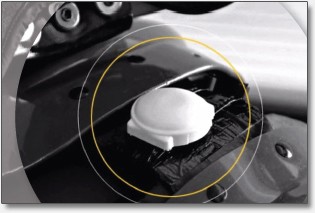Are You Ready for Some Real-Time Player Stats?

By Mary Rose Thomas-Glaser
For football fanatics, fantasy football players and coaches alike, it's a dream come true — RFID tracking chips that transmit real-time statistics on a player position, speed, direction, distance and force of impact directly to game broadcasters.
Players in this season's Thursday night games at 17 National Football League (NFL) stadiums will wear shoulder pads embedded with two, quarter-sized RFID tags — one to provide location data and the other to determine orientation. RFID tags will also be carried in referees' back pockets and affixed atop the chains on the field to mark yardage, allowing players and equipment to be tracked to within six inches. For now, the game ball will not be equipped with a tag.
Data transmitted by the tags will be captured 25 times per second, collected by a server and instantly correlated to the players. In less than one second, data will be analyzed and sent to the NFL Network for display in graphics on the live broadcast (with standard two-second delay). Viewers will have access to inside, "next generation" stats previously unavailable to fans, for instance, how far a receiver actually ran with dodges and side steps versus simply yards gained or the speed of a running back to avoid a tackle.
Next year, the NFL plans to outfit players with chips that will track health measurements such as heart rate, temperature and lung capacity to supplement game play data.
What is RFID Technology
Radio-frequency identification (RFID) uses tags attached to objects to electronically store and wirelessly transfer data using electromagnetic fields to a receiver that "reads" the information. Since it was patented in 1983, RFID chips have become increasingly miniaturized and easier to conceal and use. Scientists at Bristol University in the United Kingdom, for example, attached RFID tags measuring just 3mm long to the backs of ants to monitor their movement.
Applications for RFID technology have become widespread, and microchips are now used to find lost animals, transmit payment on toll roads, capture times at sporting events, record power usage, and track inventory in warehouses and shipment.
Classroom Discussion
- What do you think are new uses for RFID technology?
- Research electromagnetic radiation. Do you think we should be concerned about health effects of exposure to electromagnetic fields?